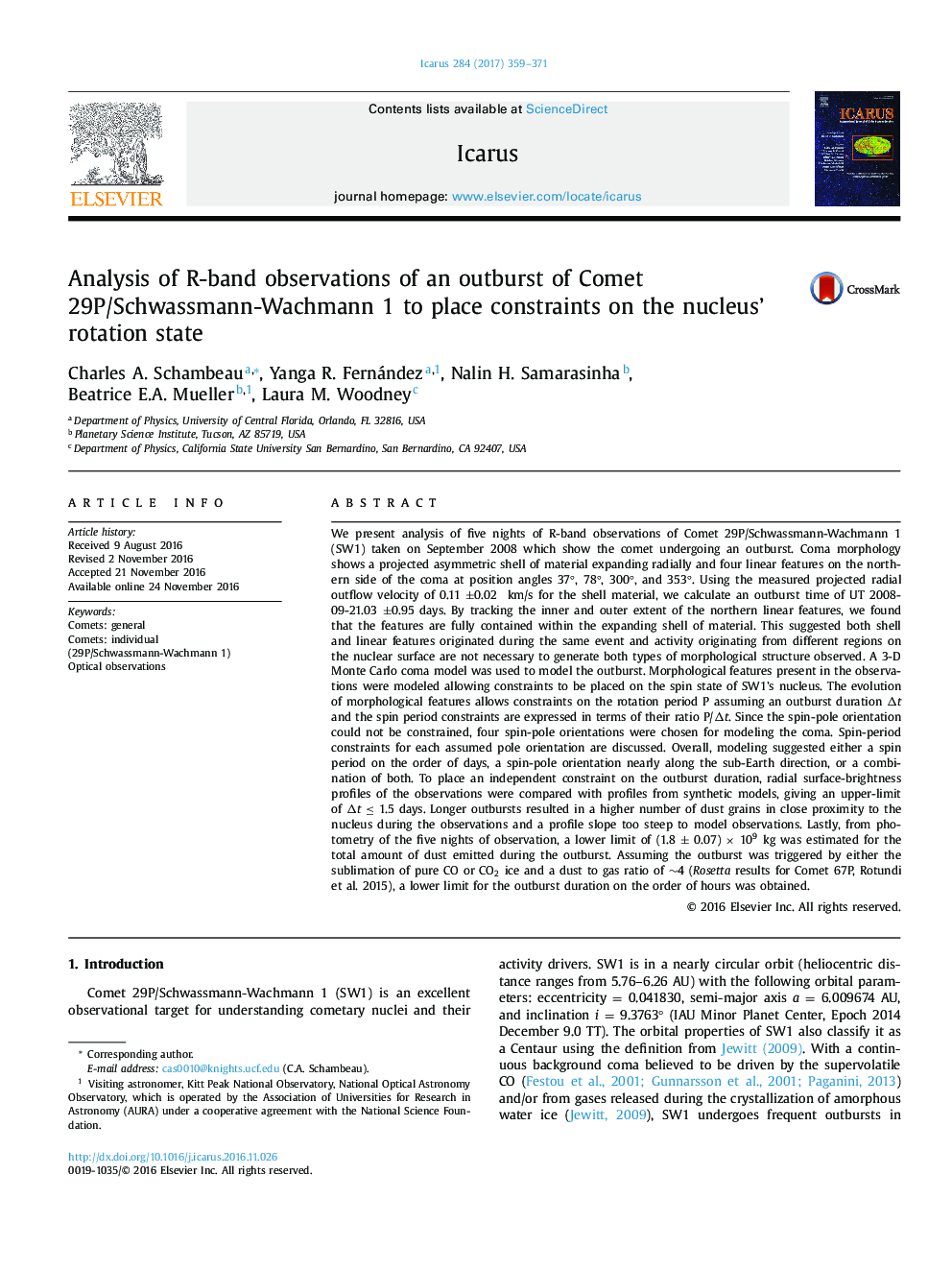| Article ID | Journal | Published Year | Pages | File Type |
|---|---|---|---|---|
| 5487148 | Icarus | 2017 | 13 Pages |
Abstract
We present analysis of five nights of R-band observations of Comet 29P/Schwassmann-Wachmann 1 (SW1) taken on September 2008 which show the comet undergoing an outburst. Coma morphology shows a projected asymmetric shell of material expanding radially and four linear features on the northern side of the coma at position angles 37°, 78°, 300°, and 353°. Using the measured projected radial outflow velocity of 0.11 ±0.02 km/s for the shell material, we calculate an outburst time of UT 2008-09-21.03 ±0.95 days. By tracking the inner and outer extent of the northern linear features, we found that the features are fully contained within the expanding shell of material. This suggested both shell and linear features originated during the same event and activity originating from different regions on the nuclear surface are not necessary to generate both types of morphological structure observed. A 3-D Monte Carlo coma model was used to model the outburst. Morphological features present in the observations were modeled allowing constraints to be placed on the spin state of SW1's nucleus. The evolution of morphological features allows constraints on the rotation period P assuming an outburst duration Ît and the spin period constraints are expressed in terms of their ratio P/Ît. Since the spin-pole orientation could not be constrained, four spin-pole orientations were chosen for modeling the coma. Spin-period constraints for each assumed pole orientation are discussed. Overall, modeling suggested either a spin period on the order of days, a spin-pole orientation nearly along the sub-Earth direction, or a combination of both. To place an independent constraint on the outburst duration, radial surface-brightness profiles of the observations were compared with profiles from synthetic models, giving an upper-limit of Ît ⤠1.5 days. Longer outbursts resulted in a higher number of dust grains in close proximity to the nucleus during the observations and a profile slope too steep to model observations. Lastly, from photometry of the five nights of observation, a lower limit of (1.8 ± 0.07) à 109 kg was estimated for the total amount of dust emitted during the outburst. Assuming the outburst was triggered by either the sublimation of pure CO or CO2 ice and a dust to gas ratio of â¼4 (Rosetta results for Comet 67P, Rotundi et al. 2015), a lower limit for the outburst duration on the order of hours was obtained.
Keywords
Related Topics
Physical Sciences and Engineering
Earth and Planetary Sciences
Space and Planetary Science
Authors
Charles A. Schambeau, Yanga R. Fernández, Nalin H. Samarasinha, Beatrice E.A. Mueller, Laura M. Woodney,
